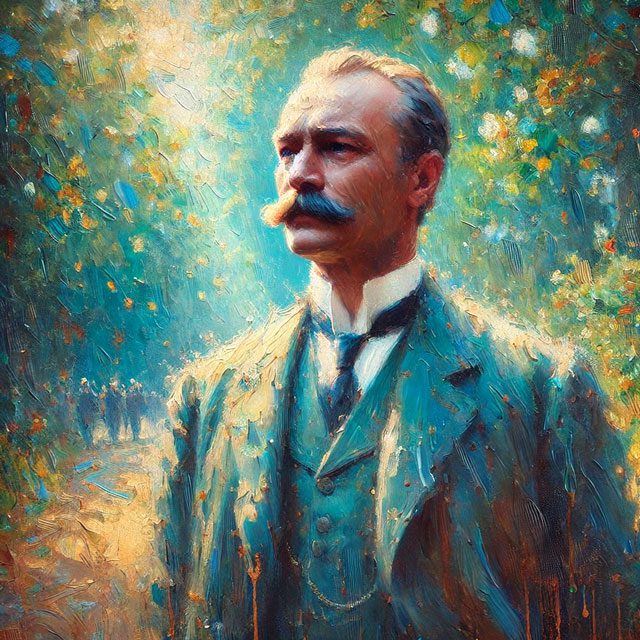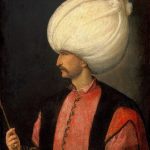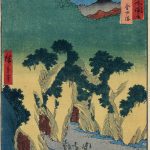
Mustafa Kemal Atatürk, the founder of modern Turkey, is most commonly recognized for his political and military achievements. But there’s another part of his legacy that often flies under the radar—his profound impact on Turkey’s art scene. Atatürk didn’t just change Turkey’s laws and government. He transformed the nation’s cultural identity, including how art was created, viewed, and appreciated. His vision for a modern, secular, and Western-facing Turkey paved the way for a vibrant and diverse art scene that still thrives today. Let’s take a closer look at how Atatürk revolutionized Turkish art and why his reforms still matter.
The Ottoman Legacy in Turkish Art
Before Atatürk’s sweeping reforms, art in the Ottoman Empire followed a very different path. Much of it was religious and traditional, focused heavily on Islamic art forms. Calligraphy, miniature painting, and architecture dominated the Ottoman art scene. These art forms were deeply tied to religious beliefs, particularly in Islam, where human figures were rarely depicted in art. Instead, artists focused on patterns, arabesques, and floral designs.
Ottoman art was often created under strict religious and political guidelines. Artists had limited freedom to explore new ideas or experiment with different styles. The art produced during this period was highly skilled and detailed but often lacked the freedom to express personal or emotional depth. Art was meant to reflect the glory of the empire and serve the state or religion.
As the Ottoman Empire began to decline, artists started to feel the tension between tradition and modernity. European influences were slowly creeping in, especially after the Tanzimat period of reforms in the 19th century. However, it wasn’t until Atatürk’s arrival on the scene that these Western influences truly took hold in Turkey. He saw the importance of breaking away from traditional Ottoman art to create something new and modern.
Atatürk believed that art, like all things in his new republic, should represent progress. For him, that meant encouraging artists to embrace more secular, Western styles. His influence would drastically change the Turkish art world, and he would guide the nation toward a more global, inclusive artistic identity.
Atatürk’s Vision for a Modern Turkey
When Atatürk founded the Turkish Republic in 1923, he had a clear vision of what he wanted the nation to become. Turkey, in his mind, had to step out of its Ottoman past and into the future. To achieve this, he implemented sweeping reforms in nearly every aspect of life—politics, education, women’s rights, and yes, even art. His reforms aimed to create a new, modern, and secular nation that could stand proudly among European countries.
Atatürk once famously said, “A nation devoid of art and artists cannot have a full existence.” This belief in the importance of art as part of a nation’s identity drove many of his cultural reforms. For Atatürk, art was not a luxury—it was a necessity. He believed that art had the power to unite people, inspire progress, and communicate a nation’s values to the world.
His vision for Turkish art was part of a broader push toward Westernization. Atatürk wanted Turkish artists to study European styles and techniques, but he also wanted them to find their own voices. He encouraged the fusion of Western ideas with Turkish traditions, believing this blend would create something entirely unique. Under his guidance, Turkish artists started to embrace new forms of expression, from painting to sculpture to theater.
Atatürk’s vision was not just about aesthetics. It was deeply political. By promoting secular and modern art, he was challenging the dominance of Islamic art forms and asserting the separation of religion and state. This shift was a critical part of his efforts to make Turkey a secular republic. Art was, for Atatürk, a tool of modernization and nation-building.
The Cultural Reforms That Shaped Turkey’s Art
Atatürk didn’t just talk about the importance of art—he actively supported it through a series of reforms. One of his first moves was to establish art academies and schools where young artists could study and develop their skills. These institutions were key to nurturing a new generation of Turkish artists who were encouraged to look beyond traditional forms and explore more secular, modern approaches.
The Academy of Fine Arts in Istanbul, which had existed under the Ottoman Empire, received a major overhaul under Atatürk’s leadership. It became a hub for modern art education, teaching Western techniques alongside Turkish history and culture. Atatürk wanted students to learn from the best of both worlds, and he invited European artists and teachers to help lead this transformation.
Another crucial reform was the dismantling of religious control over the arts. In the Ottoman Empire, religious authorities had significant influence over what could be depicted in art. Atatürk’s secular reforms removed these restrictions, allowing artists much more freedom to express themselves. This newfound artistic liberty led to an explosion of creativity. Artists began to explore themes that had previously been off-limits, such as the human form and political commentary.
Atatürk also pushed for public funding of the arts. He believed that art should be accessible to all, not just the elite. State-sponsored art programs and exhibitions became common, and new museums were established to display both Turkish and international works. This government support helped art reach a wider audience and fostered a stronger appreciation for it among the general public.
The Role of Women in Atatürk’s Artistic Vision
Atatürk’s reforms didn’t just affect male artists—women also benefited from his vision of a more progressive Turkey. In the Ottoman period, women had limited opportunities to pursue art as a career. Social expectations and religious norms often kept them out of the public eye. But Atatürk’s push for gender equality in education and the workforce extended to the art world as well.
Under Atatürk’s leadership, women were encouraged to attend art schools and participate in the cultural life of the nation. One of the most notable female artists to emerge during this time was Mihri Müşfik Hanım. She became one of the first female painters in Turkey to achieve significant recognition. Her work, which included portraits and landscapes, demonstrated the new possibilities for women in Turkish art.
Atatürk believed that the participation of women in all aspects of life, including the arts, was essential for Turkey’s progress. He saw gender equality as a key part of modernizing the nation, and his policies opened doors for many women who might otherwise have been excluded from the art world.
Women’s contributions to Turkish art didn’t stop at painting. They also became involved in sculpture, theater, and film, breaking new ground in these fields. The presence of women in the art scene helped diversify the types of stories and perspectives being shared, enriching the nation’s cultural output. This period of inclusion was a direct result of Atatürk’s reforms and his belief in the power of art to unite and advance society.
The Establishment of Museums and Art Institutions
One of Atatürk’s most enduring contributions to Turkish art was the establishment of museums and art institutions. He understood that for art to thrive, it needed a strong infrastructure—places where artists could display their work and where the public could engage with it. Museums were not just buildings filled with paintings; they were spaces where a new Turkish identity could be shaped and celebrated.
The Istanbul State Art and Sculpture Museum, which opened in 1937, is one of the key institutions born from Atatürk’s vision. This museum was the first in Turkey dedicated to showcasing the country’s modern art. It gave artists a platform to present their work and helped foster a national appreciation for contemporary art forms. The museum still stands today as a testament to Atatürk’s lasting influence on Turkish culture.
In addition to museums, Atatürk supported the creation of art schools and cultural centers across the country. These institutions were essential in promoting art as a vital part of everyday life in Turkey. They provided resources, education, and opportunities for artists to hone their craft and share it with the world.
By establishing these institutions, Atatürk made sure that art would continue to play a central role in Turkey’s future. He believed that a nation’s cultural institutions were just as important as its political ones, and he worked tirelessly to build both. These museums and schools were not just places to display art—they were incubators for a new, modern Turkish identity.
Western Influence vs. National Identity in Turkish Art
As Atatürk pushed for the modernization of Turkish art, a debate began to emerge among artists and intellectuals. On one hand, there was the desire to embrace Western art forms and techniques, which Atatürk strongly supported. On the other hand, many artists wanted to retain a uniquely Turkish identity in their work. This tension between Western influence and national identity became a central theme in Turkish art during Atatürk’s era.
Some artists, like İbrahim Çallı, were enthusiastic about adopting Western styles. They studied European masters and incorporated elements of Impressionism and Realism into their work. Çallı, in particular, became known for his portraits and landscapes, which combined traditional Turkish subjects with modern techniques. His work represented the fusion of East and West that Atatürk envisioned.
However, not all artists were eager to abandon their roots. Some, like Namık İsmail, sought to find a balance between modernism and tradition. They believed that while Western techniques could enhance their art, it was important to stay connected to Turkish culture and history. This blend of influences created a unique style of Turkish modern art, one that was both forward-looking and deeply rooted in national identity.
This debate over Western influence vs. national identity continues to shape Turkish art today. Atatürk’s reforms set the stage for this ongoing conversation, encouraging artists to explore both the global and the local in their work. His vision created a space where artists could engage with the world while also honoring their own heritage.
Atatürk’s Legacy in Contemporary Turkish Art
Atatürk’s influence on Turkish art didn’t end with his death in 1938. His reforms laid the groundwork for a vibrant and evolving art scene that continues to this day. Contemporary Turkish artists still grapple with many of the themes that Atatürk introduced, particularly the tension between Westernization and national identity.
Artists like Bedri Baykam and Hale Tenger have built on the foundations that Atatürk established, pushing the boundaries of modern Turkish art. Baykam, a painter and writer, is known for his provocative work that challenges both political and social norms. He often incorporates elements of Western pop culture while also critiquing the Westernization of Turkey, reflecting the complex legacy of Atatürk’s vision.
Hale Tenger, a contemporary multimedia artist, explores themes of memory, identity, and politics in her work. Her installations often delve into the struggles between modernity and tradition, a tension that has its roots in Atatürk’s reforms. Both Tenger and Baykam demonstrate how Atatürk’s influence continues to shape Turkish art, even as new generations of artists push the boundaries of what it means to be Turkish.
Atatürk’s legacy in Turkish art is a living one. His vision for a modern, secular, and creative nation laid the foundation for generations of artists to explore new ideas and express themselves freely. Today, Turkish artists continue to engage with the questions and challenges that Atatürk first raised nearly a century ago.
The Political Influence of Art in Atatürk’s Time
Atatürk understood the power of art as a political tool. During his leadership, art became a way to communicate the ideals of the new Turkish Republic. Public art, in particular, was used to promote secularism, nationalism, and modernity. Statues of Atatürk himself were erected across the country, symbolizing the new direction Turkey was heading.
One of the most iconic examples of this is the Victory Monument in Ankara, which was unveiled in 1927. The monument features a heroic statue of Atatürk, representing his role as the leader of the nation’s liberation. This type of public art was not just decorative—it was deeply symbolic, intended to inspire pride and unity among the Turkish people.
Art also played a role in challenging the old Ottoman order. By promoting new styles and subjects, Atatürk and his government were making a statement about the break with the past. Traditional Islamic art, which had dominated the Ottoman period, was pushed aside in favor of more secular and modern forms. This shift was part of Atatürk’s broader effort to redefine Turkish identity.
Atatürk’s use of art as a political tool was highly effective. It helped cement his vision of a modern, progressive Turkey in the minds of the people. Even today, public art in Turkey often reflects the themes that Atatürk championed—national pride, secularism, and the importance of progress.
International Recognition of Turkish Art
Atatürk didn’t just want to change art within Turkey—he wanted Turkish art to be recognized on the global stage. Under his leadership, Turkish artists began to exhibit their work internationally, bringing a new awareness of Turkey’s cultural scene to the world. This was part of Atatürk’s broader push for Turkey to become a respected member of the global community.
One of the most significant events in this regard was Turkey’s participation in the Venice Biennale, an international art exhibition. Turkish artists showcased their work alongside artists from Europe and beyond, demonstrating that Turkey was a modern, creative, and forward-thinking nation. This international exposure helped put Turkish art on the map and signaled that the country was ready to engage with the global art world.
Atatürk also encouraged cultural exchanges between Turkey and other nations. He believed that by sharing ideas and artistic practices, Turkey could learn from the world while also contributing its own unique voice. This openness to international collaboration helped foster a more dynamic and innovative art scene in Turkey, one that continues to evolve and grow today.
Conclusion: Atatürk’s Vision Still Shapes Turkish Art
Atatürk’s impact on Turkey’s art scene was profound and far-reaching. His vision of a modern, secular, and creative nation continues to influence Turkish art today. By promoting Western techniques and ideas while also encouraging artists to find their own voices, Atatürk helped create a unique and vibrant art scene that blends tradition with innovation.
Even though Atatürk’s era is long past, his legacy lives on in the work of contemporary Turkish artists. They continue to explore the themes he introduced—modernity, national identity, and the power of art to shape a nation’s future. As Atatürk himself once said, “Art is the heart and soul of a nation. Without it, a nation is incomplete.”
Atatürk’s reforms laid the foundation for a rich and diverse art scene in Turkey, one that will undoubtedly continue to grow and evolve for generations to come.




